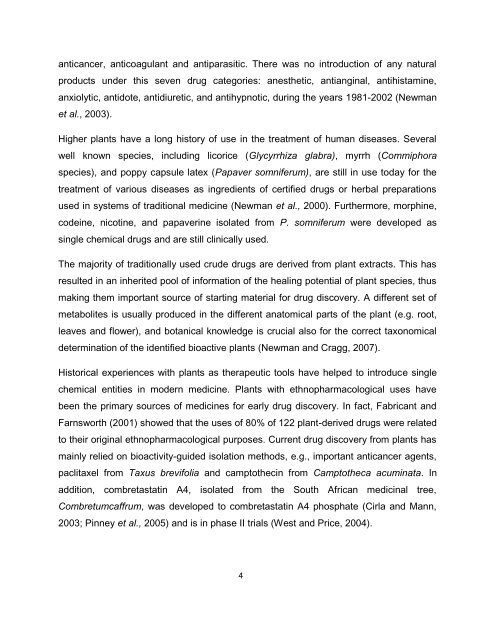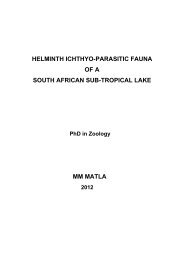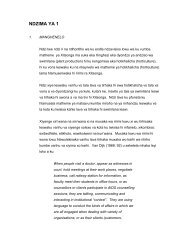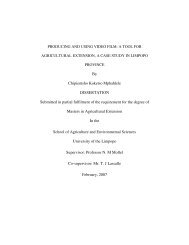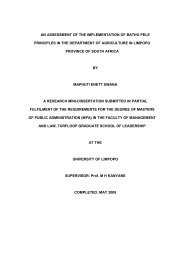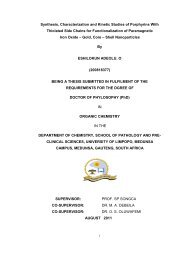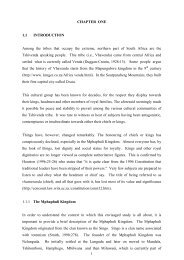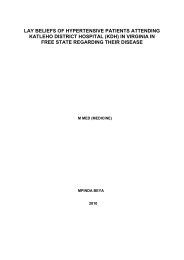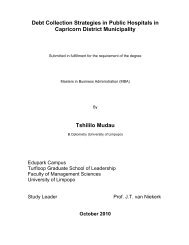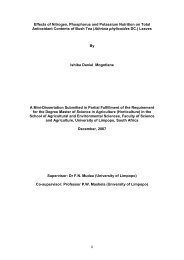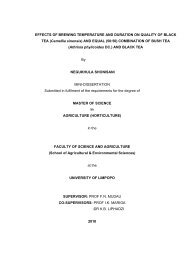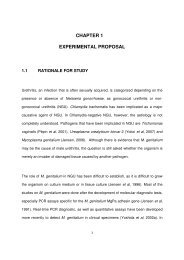Mmushi T MSc (Microbiology).pdf
Mmushi T MSc (Microbiology).pdf
Mmushi T MSc (Microbiology).pdf
Create successful ePaper yourself
Turn your PDF publications into a flip-book with our unique Google optimized e-Paper software.
anticancer, anticoagulant and antiparasitic. There was no introduction of any natural<br />
products under this seven drug categories: anesthetic, antianginal, antihistamine,<br />
anxiolytic, antidote, antidiuretic, and antihypnotic, during the years 1981-2002 (Newman<br />
et al., 2003).<br />
Higher plants have a long history of use in the treatment of human diseases. Several<br />
well known species, including licorice (Glycyrrhiza glabra), myrrh (Commiphora<br />
species), and poppy capsule latex (Papaver somniferum), are still in use today for the<br />
treatment of various diseases as ingredients of certified drugs or herbal preparations<br />
used in systems of traditional medicine (Newman et al., 2000). Furthermore, morphine,<br />
codeine, nicotine, and papaverine isolated from P. somniferum were developed as<br />
single chemical drugs and are still clinically used.<br />
The majority of traditionally used crude drugs are derived from plant extracts. This has<br />
resulted in an inherited pool of information of the healing potential of plant species, thus<br />
making them important source of starting material for drug discovery. A different set of<br />
metabolites is usually produced in the different anatomical parts of the plant (e.g. root,<br />
leaves and flower), and botanical knowledge is crucial also for the correct taxonomical<br />
determination of the identified bioactive plants (Newman and Cragg, 2007).<br />
Historical experiences with plants as therapeutic tools have helped to introduce single<br />
chemical entities in modern medicine. Plants with ethnopharmacological uses have<br />
been the primary sources of medicines for early drug discovery. In fact, Fabricant and<br />
Farnsworth (2001) showed that the uses of 80% of 122 plant-derived drugs were related<br />
to their original ethnopharmacological purposes. Current drug discovery from plants has<br />
mainly relied on bioactivity-guided isolation methods, e.g., important anticancer agents,<br />
paclitaxel from Taxus brevifolia and camptothecin from Camptotheca acuminata. In<br />
addition, combretastatin A4, isolated from the South African medicinal tree,<br />
Combretumcaffrum, was developed to combretastatin A4 phosphate (Cirla and Mann,<br />
2003; Pinney et al., 2005) and is in phase II trials (West and Price, 2004).<br />
4


